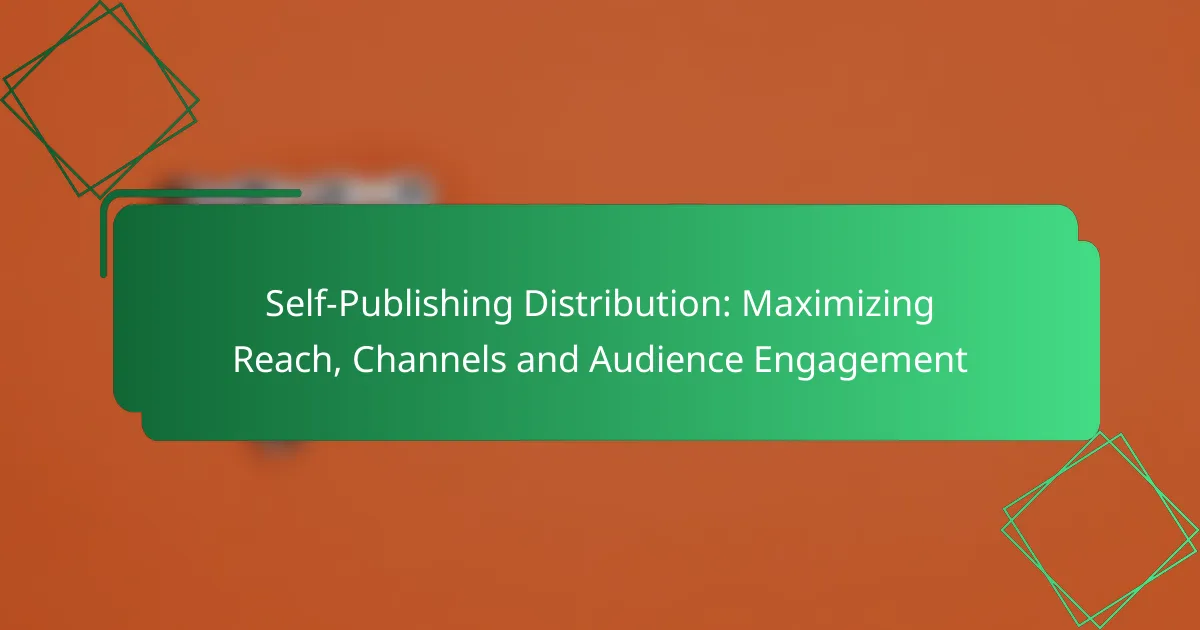In the competitive world of self-publishing, maximizing reach requires a strategic focus on diverse distribution channels and direct audience engagement. By utilizing platforms like Amazon Kindle Direct Publishing and IngramSpark, authors can enhance visibility and accessibility. Additionally, fostering loyalty through active reader interaction can significantly boost sales and create a more invested audience.
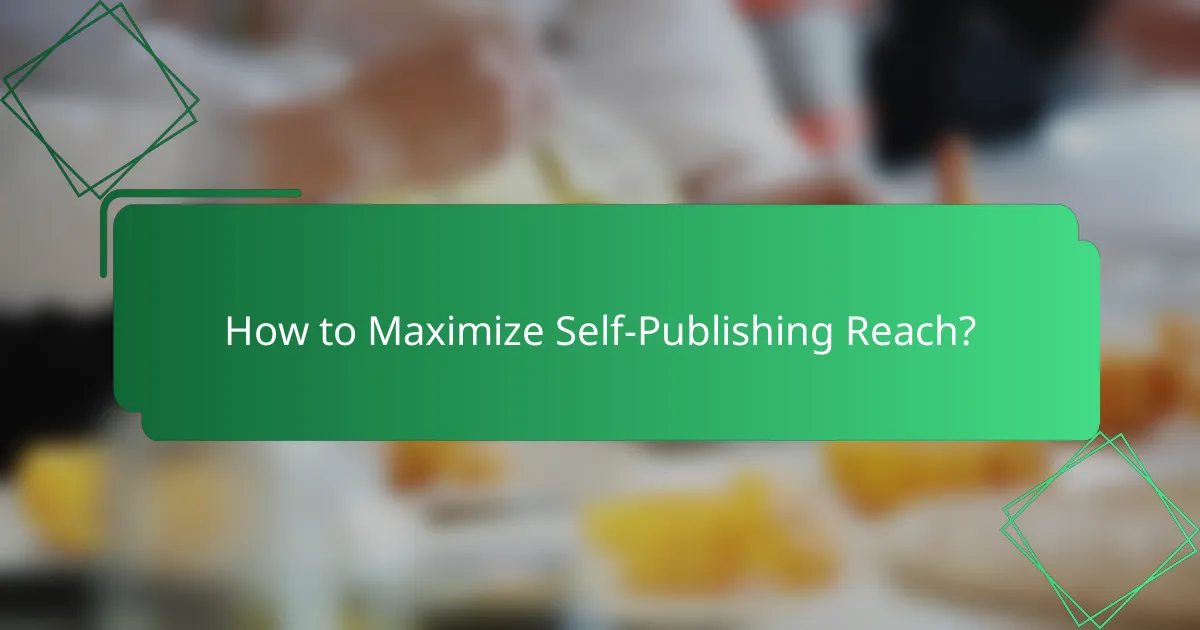
How to Maximize Self-Publishing Reach?
To maximize self-publishing reach, authors should focus on diversifying their distribution channels, engaging with audiences directly, and leveraging online platforms effectively. A strategic approach can significantly enhance visibility and sales potential.
Utilize Online Retailers
Online retailers like Amazon, Barnes & Noble, and Kobo are essential for reaching a broad audience. Each platform has unique features, such as Kindle Unlimited or promotional pricing, which can help boost visibility.
Consider enrolling in programs like Amazon’s KDP Select, which offers promotional tools in exchange for exclusivity. However, weigh the benefits against potential limitations on distribution.
Leverage Social Media Platforms
Social media platforms such as Facebook, Instagram, and Twitter are powerful tools for connecting with readers. Regularly post engaging content, including book updates, behind-the-scenes insights, and reader polls to foster community interaction.
Utilize targeted ads to reach specific demographics, and consider using platforms like TikTok, where book-related content is gaining traction. Aim for consistent engagement to build a loyal following.
Engage with Book Bloggers
Connecting with book bloggers can significantly enhance your book’s visibility. Reach out to bloggers who specialize in your genre and offer them free copies for honest reviews.
Participate in blog tours or guest posts to tap into their established audiences. This can create buzz and provide valuable feedback from avid readers.
Participate in Virtual Events
Virtual events, such as webinars, online book fairs, and author panels, allow you to connect with readers and other authors. These platforms can showcase your expertise and promote your work to a wider audience.
Consider hosting your own events or participating in established ones. Engaging in Q&A sessions can also help build rapport with potential readers.
Optimize Author Website
Your author website should serve as a central hub for your work and brand. Ensure it is user-friendly, mobile-optimized, and includes essential information like book details, a blog, and a mailing list sign-up.
Utilize SEO best practices to improve search engine visibility. Regularly update your content to keep readers engaged and informed about upcoming releases or events.
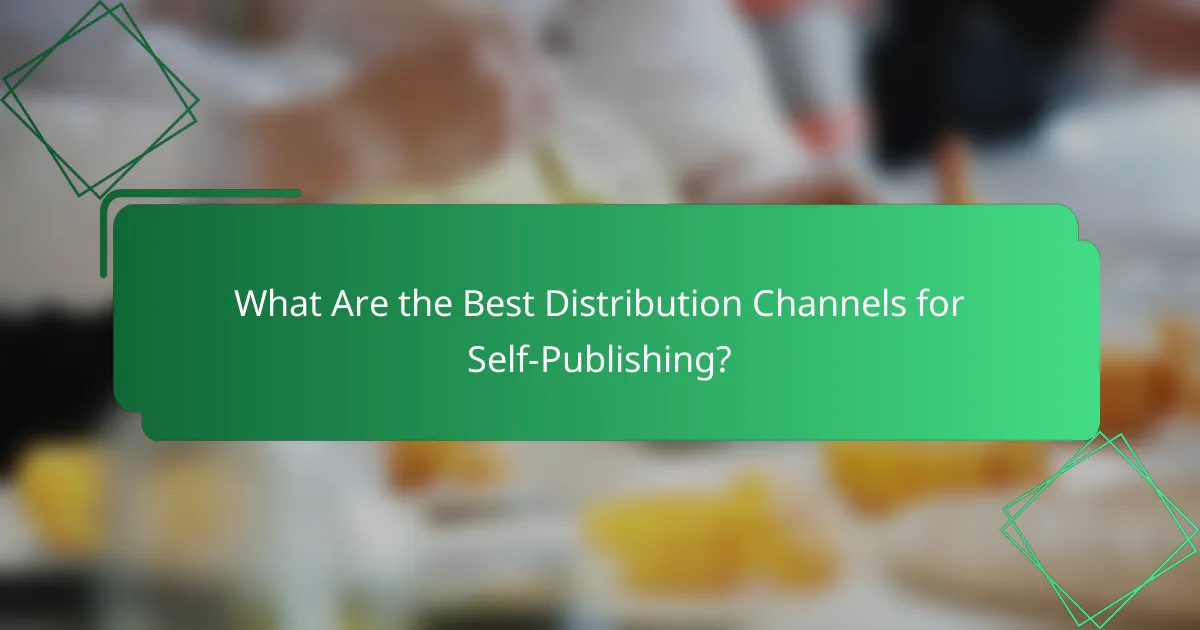
What Are the Best Distribution Channels for Self-Publishing?
The best distribution channels for self-publishing include platforms that maximize your book’s visibility and accessibility to readers. Key options like Amazon Kindle Direct Publishing, IngramSpark, Smashwords, and Draft2Digital each offer unique advantages and considerations for authors looking to reach a wider audience.
Amazon Kindle Direct Publishing
Amazon Kindle Direct Publishing (KDP) is one of the most popular platforms for self-publishing, allowing authors to publish eBooks and paperbacks directly on Amazon. KDP offers a straightforward setup and the potential for high visibility due to Amazon’s vast customer base.
Authors can choose between exclusive and non-exclusive distribution options. The exclusive option allows participation in Kindle Unlimited, which can increase readership but limits distribution elsewhere. Consider your goals when deciding which route to take.
IngramSpark Distribution
IngramSpark provides extensive distribution options for both print and eBooks, connecting authors to bookstores, libraries, and online retailers worldwide. This platform is ideal for authors looking to reach a broad audience beyond Amazon.
While IngramSpark has a setup fee, it offers a professional presentation and the ability to set your own pricing. Be aware of the potential for returns from retailers, which can affect your profits. Ensure your book meets industry standards for formatting to avoid complications.
Smashwords for Ebooks
Smashwords is an eBook distribution platform that allows authors to publish their work and distribute it to multiple retailers, including Apple Books, Barnes & Noble, and Kobo. This platform is known for its user-friendly interface and comprehensive distribution network.
Authors can set their own pricing and offer promotional discounts. However, be mindful of the formatting requirements, as Smashwords has specific guidelines that must be followed to ensure acceptance into their catalog.
Draft2Digital for Wide Distribution
Draft2Digital is another excellent choice for authors seeking wide distribution of their eBooks. It simplifies the publishing process and distributes to major retailers, including Amazon, without the need for separate accounts.
One of the standout features of Draft2Digital is its automatic formatting tool, which helps authors prepare their manuscripts for publication. Additionally, they offer free ISBNs and a user-friendly dashboard to track sales across platforms. Consider using Draft2Digital if you want an easy way to manage multiple distribution channels.

How to Enhance Audience Engagement?
Enhancing audience engagement involves actively connecting with your readers to foster loyalty and interaction. This can be achieved through various strategies that encourage participation and feedback, ultimately leading to a more invested audience.
Build an Email List
Building an email list is crucial for maintaining direct communication with your audience. Start by offering incentives such as exclusive content or discounts to encourage sign-ups. Aim for a subscriber base that grows steadily, targeting a few hundred to a few thousand subscribers as a solid foundation.
Utilize sign-up forms on your website and social media platforms to capture emails. Regularly send newsletters that include updates, promotions, and personalized content to keep your audience engaged.
Utilize Reader Feedback
Reader feedback is invaluable for understanding your audience’s preferences and improving your content. Encourage feedback through surveys, comment sections, or social media polls to gather insights on what resonates with your readers.
Actively respond to feedback and show appreciation for reader contributions. This not only enhances engagement but also builds a community around your work, making readers feel valued and heard.
Create Interactive Content
Interactive content, such as quizzes, polls, and surveys, can significantly boost audience engagement. This type of content encourages readers to participate actively rather than passively consuming information.
Consider integrating tools that allow readers to interact with your content directly. For example, a quiz related to your book’s themes can spark interest and encourage sharing, expanding your reach.
Host Live Q&A Sessions
Hosting live Q&A sessions provides a platform for real-time interaction with your audience. These sessions can be conducted via social media platforms or dedicated webinar tools, allowing readers to ask questions and engage directly with you.
Promote these events in advance to maximize participation. Prepare to address common questions and topics of interest, and consider recording the sessions for future reference, allowing those who missed it to engage later.
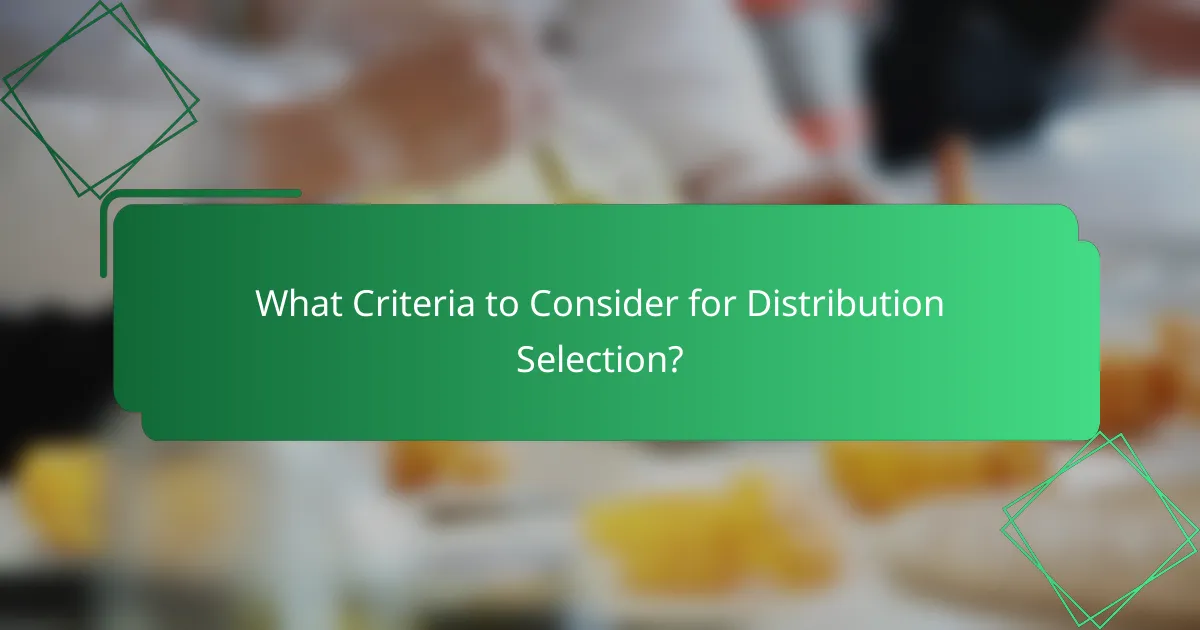
What Criteria to Consider for Distribution Selection?
When selecting a distribution channel for self-publishing, consider factors such as royalty rates, market reach, and format compatibility. These criteria will help you maximize your book’s visibility and profitability while ensuring it meets the needs of your target audience.
Royalty Rates Comparison
Royalty rates can vary significantly between different distribution platforms. Generally, traditional publishers offer royalties ranging from 10% to 25%, while self-publishing platforms may provide rates from 35% to 70% depending on the pricing model and distribution choices.
For example, Amazon Kindle Direct Publishing (KDP) offers a 70% royalty option for eBooks priced between $2.99 and $9.99. In contrast, platforms like Smashwords may offer lower rates but provide broader distribution across various retailers.
Market Reach Assessment
Evaluating market reach involves understanding where your target audience shops for books. Some platforms, like Amazon, dominate the eBook market, while others, such as Barnes & Noble or Apple Books, may cater to specific demographics.
Consider using multiple distribution channels to enhance your market presence. For instance, distributing through both KDP and IngramSpark can help you reach a wider audience, including both online and brick-and-mortar retailers.
Format Compatibility
Format compatibility is crucial for ensuring your book is accessible across various devices and platforms. Most eBook distributors require formats like EPUB or MOBI, while print distributors may need PDF files that meet specific print standards.
Before choosing a distribution channel, verify the required formats and any conversion services offered. For example, Draft2Digital provides free formatting tools that can help you prepare your manuscript for multiple eBook formats, simplifying the distribution process.
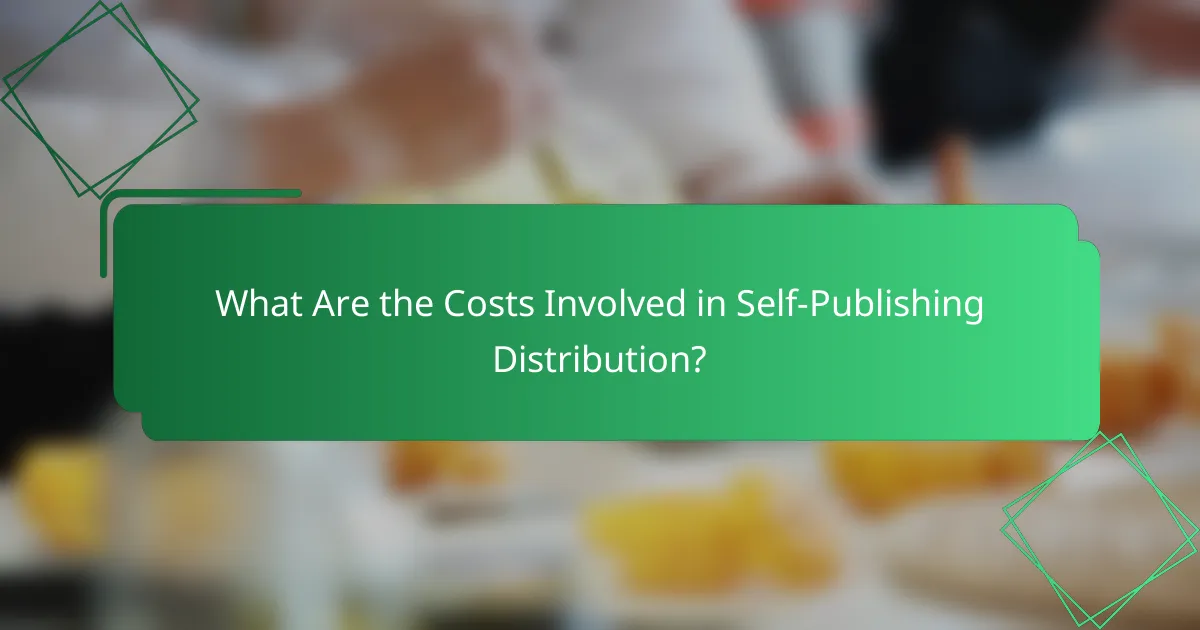
What Are the Costs Involved in Self-Publishing Distribution?
The costs of self-publishing distribution can vary significantly based on the platforms chosen and the services utilized. Authors should consider setup fees, distribution percentages, and additional marketing costs when budgeting for their self-publishing journey.
Setup Fees for Platforms
Many self-publishing platforms charge setup fees to create an account and publish your book. These fees can range from zero to a few hundred dollars, depending on the platform and the services included. For instance, platforms like Amazon Kindle Direct Publishing (KDP) do not charge upfront fees, while others like IngramSpark may have fees around $49 for initial setup.
When evaluating platforms, consider what services are bundled with the setup fee. Some platforms may offer additional features, such as distribution to multiple retailers or marketing tools, which can justify higher costs. Always read the fine print to understand what you are paying for.
Additionally, keep in mind that some platforms may charge recurring fees or additional costs for revisions, so factor these into your overall budget. A clear understanding of these fees will help you maximize your investment in self-publishing distribution.
